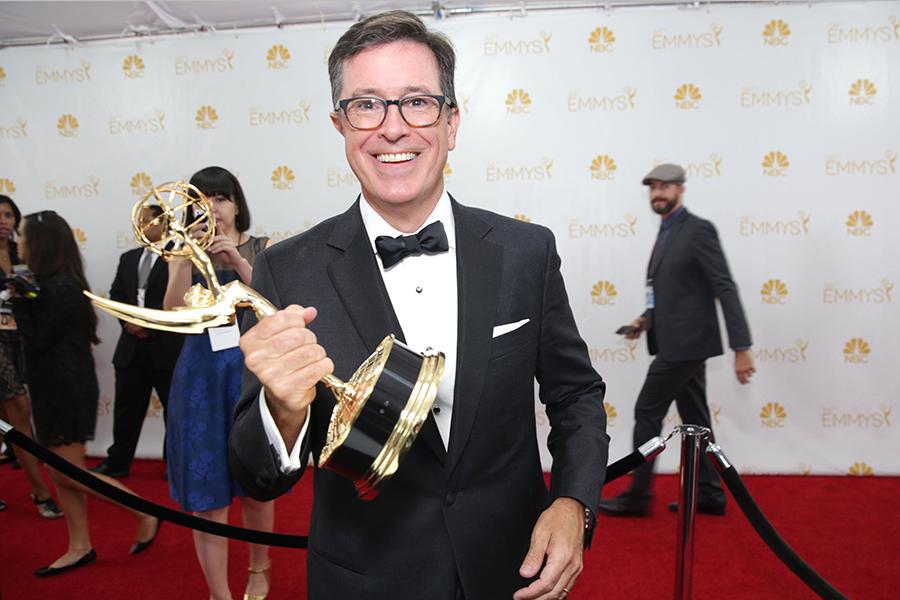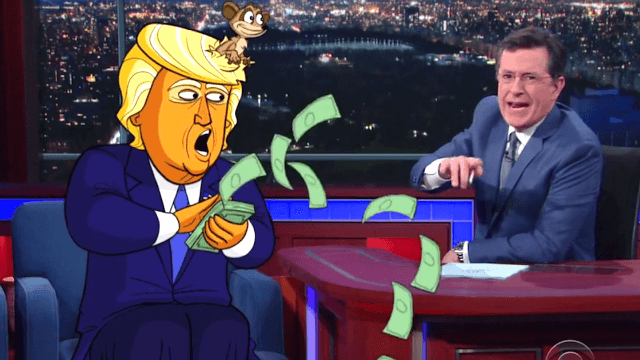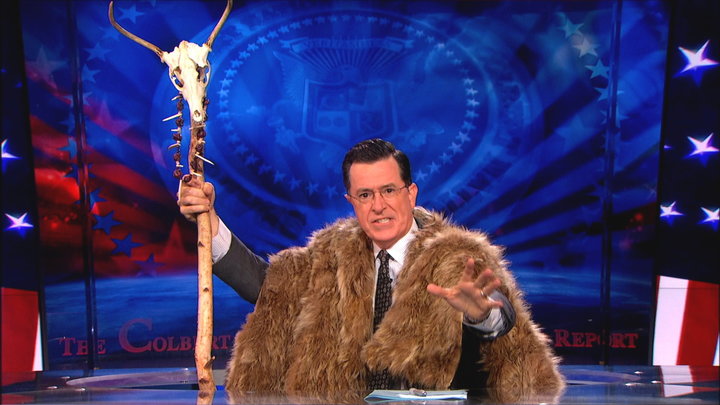Why hasn’t the success of “The Colbert Report” led to high ratings for Colbert’s “The Late Show”?
Quick Answer: Whereas The Colbert Report was met with consistent critical acclaim and impressive ratings for all of its nine seasons, Colbert’s new outlet, The Late Show with Stephen Colbert, has been struggling. This largely has do with the broader target audience of late night television, which has caused Colbert to tone down his critical political roots in favor of a more every-man persona. However the show has demonstrated that it can achieve higher ratings and more of a viral presence when it allows Stephen Colbert to channel the anarchic spirit of the old “Stephen Colbert.”
The Colbert Report (2005 - 2014) was lauded by many critics and fans as a vital and often hilarious reaction to American life and politics for its nine seasons. Yet, The Late Show with Stephen Colbert (2015 - ) is not getting the ratings or the critical acclaim that Colbert’s old show did, and especially hasn’t been successful at getting online clicks the way time-slot mate Jimmy Fallon, and fellow CBS host James Corden have.
The show was not nominated for any Emmy awards this year. The Colbert Report always was, and won seven. The ratings are behind that of The Tonight Show Starring Jimmy Fallon (2014 - ), even after the live shows after the Democratic and Republican conventions lifted ratings at last. Why has it been so difficult for Colbert to increase his viewership in what should be a much larger potential audience?

Stephen Colbert with his 2014 Emmy for The Colbert Report (2005 - 2014)
As James Poniewozik writes in The New York Times, “Night by night, ‘Late Show’ was fine but inessential. The Colbert Report’s absence has been keenly felt, especially as this latest presidential election season has unfolded. Colbert’s knack for tackling polarizing politics has taken the backseat as Colbert has taken to the late night circuit.” The live shows of The Late Show with Stephen Colbert after the Republican and Democratic conventions gave long time Colbert fans more of what they wanted, while potentially alienating those who did not watch, or did not enjoy that show. The first eight months Colbert’s run with Late Night included a lot of features that were very different from his original show and that surprised and often disappointed longtime viewers of TCR. The old fashioned stand-up monologue, the dancing and banter with bandleader Jon-Batiste, and the non-topical skits were very different from the sharp-witted and hyper-critical sketches of Colbert’s previous show. While it seemed fair to let Stephen retire the “Stephen Colbert” persona and be himself, a nice guy with a talent for improvisation, this toning down of character has taken away part of what made TCR so popular in the first place.
Sketches on The Colbert Report were overtly political and most often focused on current events through the prism of a conservative blowhard. Recurring bits like “The Wørd” and “The Threat Down” were reliable crowd pleasers, and the half-hour length kept things punchy and prevented any piece from dragging. The TCR audience could appreciate intellectual and timely bits, like his piece on “Truthiness” or his attempt to interview politicians in “Better Know a District,” while still laughing at silly bits such as Stephen’s recurring fear of BEARS!
On The Late Show, much of the content seems designed to appeal to broad audiences across multiple demographics (young men, older women, and so on) and to be uncontroversial – after all, such is the nature of late night television. Sketches often rely on the particular personality of the guest, which works well when the guests can improvise, and may not when they can’t do so. The show’s most successful political sketch, “The Hungry for Power Games,” was designed to only last as long as there were candidates dropping out of the election, and although the show extended the persona through Colbert’s attempts to get on the podium at both conventions (he had more difficulty at the DNC, but succeeded at both), he’s started resorting to gimmicks like adding a stuffed ferret to his act. Neither “Road to the White House” nor the “Cartoon Donald Trump” (and now “Cartoon Hillary Clinton”) have “gone viral.”

Stephen Colbert and Cartoon Donald Trump on The Late Show with Stephen Colbert (2015 - )
Colbert’s interviews, which can range from top movie stars to politicians and intellectuals, vary greatly based on his interest the guest’s quickness. TCR generally focused on politicians, authors, or scientists, and these are still the guests with whom Colbert seems the most comfortable. His two bits with Jon Stewart during the Republican National Convention were a highlight (although audiences were disappointed when Stewart did not return for the Democratic National Convention), as was his interview with Jon Oliver. But it was absolutely jarring on the first live show after the RNC to follow up his razor-sharp battle with Jon Stewart about how to describe Donald Trump with an interview with Zoe Saldana about the new Star Trek movie and her five month old child. Colbert is obviously most in his element when he is geeking out over one of his interests, like Broadway musicals, outerspace, or politics, which may not be mainstream America’s cup of tea.
During the conventions Colbert first brought back “Stephen Colbert” doing “The Wørd” from the old show and, after Viacom lawyers sent a cease and desist order, “Stephen Colbert’s” identical cousin “Stephen Colbert” to do “The WERD.” It was a good start that evidently improved ratings and showed that Colbert’s “niche” humor might have a broader appeal than Late Show executives anticipated. For ratings to stay up, at least during election season, he may have to stop questing for “everyone” and start targeting the audiences who kept him going for nine years, and hope that new audiences are attracted through social media.
Of course, the election season ends in a few months, along with mainstream interest in politics. Veering towards the political might not be a sustainable strategy for The Late Show unless it captures more of Colbert’s old audience. But as the viral success of Last Week Tonight with John Oliver (2014 - ) shows, there is still a significant audience for sharp, polarizing and unabashedly political television. The fate of The Late Show may rest on its new host’s ability to balance every-man Stephen Colbert with geeky and passionate TCR-era Stephen Colbert. To do this, he’ll need to bring more of the anarchic spirit of his old show to late night circuit.

Stephen Colbert on The Colbert Report (2005 - 2014)

